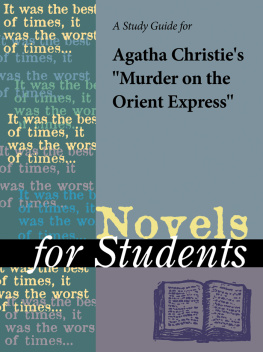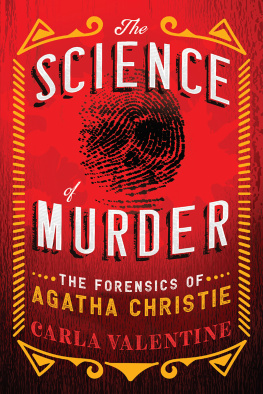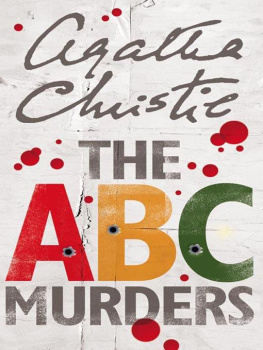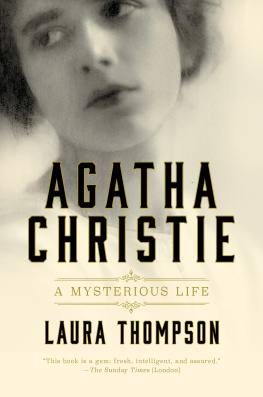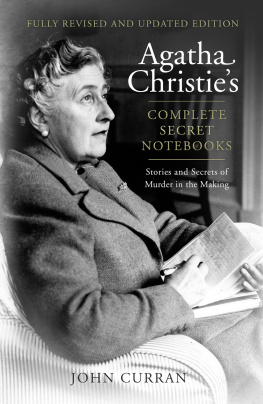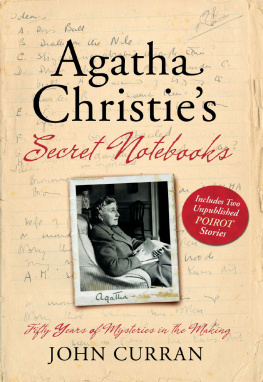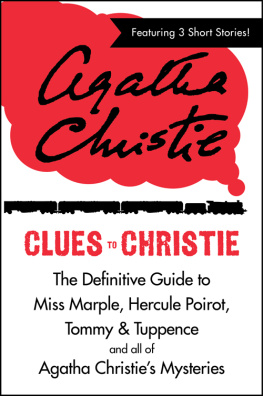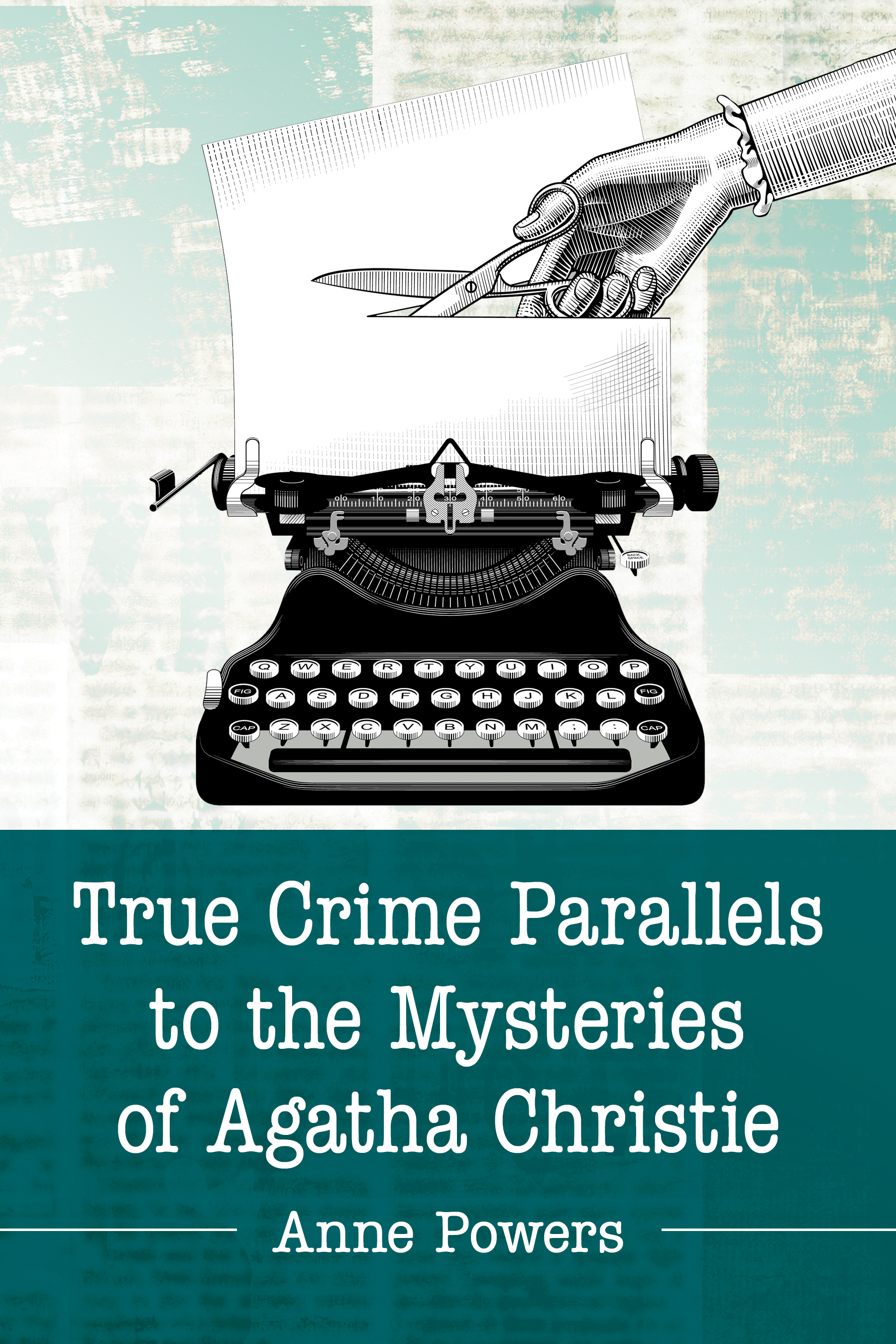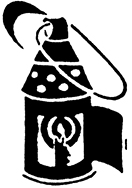The author would like to thank the librarians and staff of UCLAs Hugh & Hazel Darling Library of the School of Law, and of UCLAs Charles Young Research Library, for their invaluable aid in accessing their invaluable resources.
Special thanks go to Dale Stieber, Special Collections Librarian and College Archivist, and to Helena de Lemos, Special Collections Instruction & Research Librarian, of Occidental College Library, Los Angeles, for their enthusiasm and help in using the outstanding resources of the Ned Guymon Mystery and Detective Fiction Collection.
Preface
This book is dedicated to fans and students of Agatha Christie and her mystery-detective fiction, as well as to fans and students of classic true-crime lore.
The accounts contained herein provide fascinating insights into notorious past events that doubtless influenced Agatha Christie as she created some of her most famous works of detective fiction. This work was written for anyone who has ever wondered about the inspirations for her clever tales, or for anyone interested in the Queen of Crimes works in general. It is equally relevant for aficionados of criminology and of true crime accountsespecially accounts of vintage British causes clbres.
There are reasons that Agatha Christie is the modern-day worlds most successful author, outsold only by the Bible and the works of William Shakespeare. Her fans are legion, with over two billion of her detective tales sold to avid readers. Christies appeal is essentially universal: her works are appreciated by individuals from all walks of life and from many different countries. Her dedication to the primacy of the puzzle, and to fabricating the most ingenious puzzles for the discriminating palates of mystery aficionados, and to playing fair with her readers, resulted in creation of highly entertaining and accessible works of fiction that can be enjoyed again and againwhether in print, in films, or in the spoken word. Her stories usually invite readers to participate in a race with the fictional sleuth of the tale, vying to be the first to unmask whodunit. And when readers find themselves once again outfoxed by the storys detectiveand by the storys authorthey are likely to be more delighted than chagrined as they fall victim, once again, to the Queen of Crimes mastery of pleasurable deception.
There is no doubt that each of Christies fiction stories is her own independent and original creation, complete with her own unique and imaginative set of puzzles and solutions. Several are also distinguished by an underlying authenticity lent by consideration of famous real-life crimes; crimes whose infamous stories are essentially ingrained in popular cultural historyespecially British cultural history. Far and away the most prevalent type of crime featured in her body of work is the domestic crime: of the 66 mystery novels she produced, nearly two-thirds feature murders that occur in a family or household setting. British criminal history fairly teems with legendary domestic true crimes whose imprints have become permanently woven into the nations cultural fabric: the names Crippen, Palmer, and many others still resonate to this day.
Present-day readers of Christies mystery and detective concoctions are far removed in time from even indirect experience of those events. They may be unaware of the role the events could have played in affecting Christies creative processes, and thus unfortunately miss out on rich, enlightening, and absorbing aspects that can multiply enjoyment of this remarkable authors tales many times over.
The present work repairs this regrettable circumstance, bridging the gap to recognition of famous true crimes that informed some of Christies most celebrated and inventive creations. The publics fascination with the cases treated has been ongoing over the passing years, the decadesand even, in some cases, over the passing centuries. True Crime Parallels aims to allow readers to discover why much of the worldand Agatha Christiefound these long-past events so enduringly intriguing.
The true-life events occurred mostly in the hundred years roughly spanning the mid1800s to the mid1900s, beginning with the William Palmer case of 1856 and ending with the Dennis ONeill tragedy in 1945. Of the events featured in the work, seven occurred in Great Britain, two in the United States, and one in France. Nine involve deliberate transgressions that ended at least one life; the tenththe case of Gene Tierneyinvolves a morally problematic transgression that resulted in the ruin of at least one life.
To showcase the prominence and ubiquity of newspaper publications in proliferating information about the true-life events, many citations in this work originate from news stories published at the time of the event or later. Newspaper accounts of the true-crime histories were the most prevalent means of providing information about those crimes: readers across all class and economic strata were practically deluged by ongoing and exhaustive, day-by-day results of discovery, investigation, speculation, and resolution of the sensational murders or other malefactionsincluding readers like Agatha Christie. To give this works readers an idea of both the immediate and the enduring impact over time that each true-crime case exertedand still exertsupon the public consciousness, profiles may include citations about the incident, taken from Christies tales, newspaper articles, and other sources. Although American spelling conventions for the English language are used throughout, directly quoted terms, titles, phrases, etc. reflect source spelling (for example, British labour for labor or defence for defense).
The Christie tales cited include a variety of editions and print formats (for example, hardcover, paperback, large print), reflecting the plethora of editions available year after year to Christie fans. First or near-first print editions, however, were used for the ten Christie titles featured in this work. Most of these were either published in New York by Dodd, Mead for American editions, or in London by Collins for the British editions. The citations within the profiles briefly identify sources quoted, and point to full bibliographic entries at the end of the book.
Introduction
Agatha Christie, the undisputed bestselling Queen of Crime among modern mystery and detective writers, was inspired by more than one famous true-crime story of the past. True Crime Parallels to the Mysteries of Agatha Christie celebrates this circumstance by presenting a collection of ten famous Christie creations, and discussing them together with histories of the sensational, tragic, or scandalous real-life events that colored them. Some of her most enduringly famous novels and stories were largely influenced by exciting famous true crimes. These influences were not always directly identified as such within the story but were nonetheless easily recognizablenot just to professional criminologists and crime-lore specialists but to reasonably informed, ordinary folk alike.


